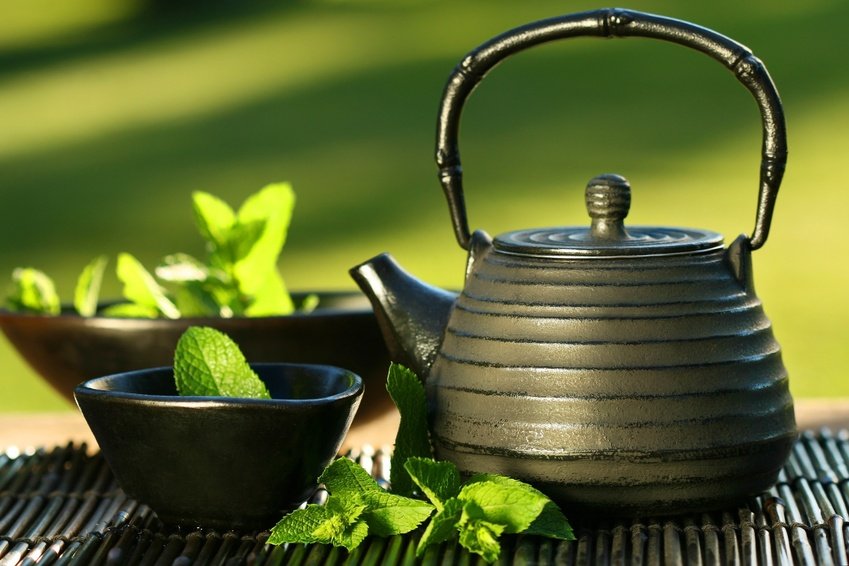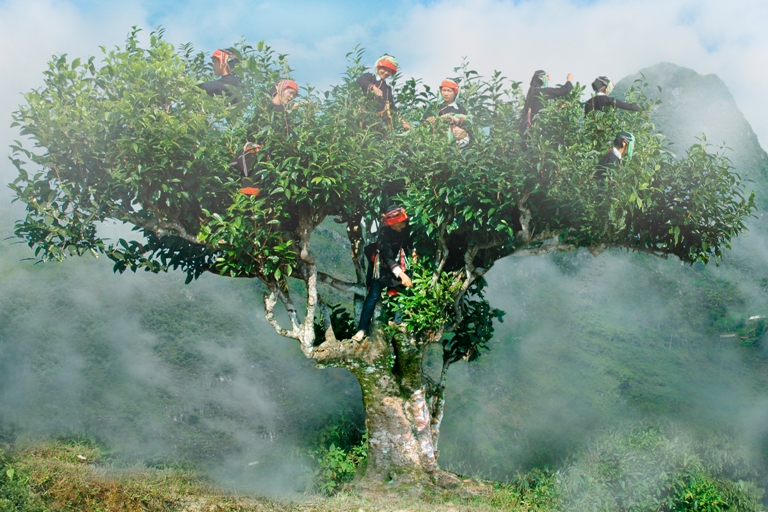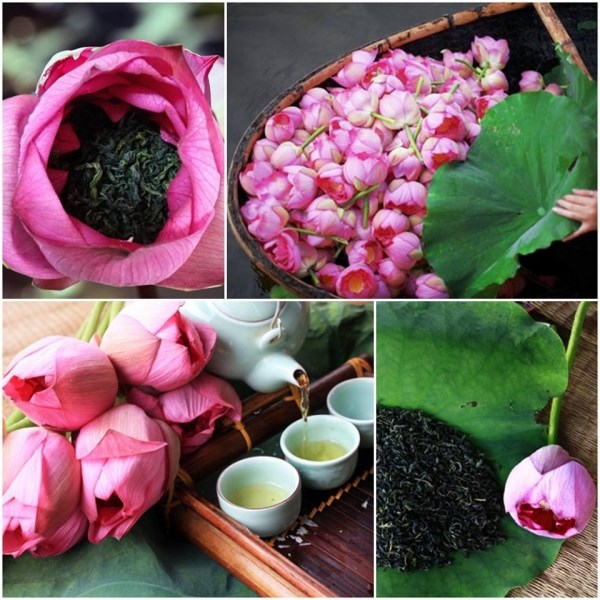Like other countries in Asia, Vietnam has to its own a rich tea culture which has been fostered for thousands of years. Tea plays an essential role in the cultural life of the Vietnamese both in the past and in the present. Vietnam is the world’s 7th largest producer of tea, after Indonesia, producing a quantity roughly comparable to the amount made by Japan.
10 Desserts You Can’t-Miss in Vietnam
Vietnam produces a number of high-quality teas that are well-known within Asia but virtually unknown in the rest of the world. Vietnam produces black, green, white, and oolong teas, but is better known for green teas.
Green Tea – Tra Xanh
Green tea is the most popular among Vietnamese people. In the past, Vietnamese people, especially in countryside regions, had a habit of drinking green tea every day just like the westerners drinking coffee. Green tea has been planted extensively throughout the North and Central Highlands of Vietnam. Green tea is very suitable for Vietnam’ soil and climate, producing larger leaves in comparison to other tea plants, well suited to produce fresh loose leaf teas with little additional processing. Many farmers have claimed that their lives wouldn’t be complete without a cup of green tee every morning just before going to the rice fields. Even to this day, green tea is still drunk a lot not only by the old people but also the young because of its many benefits for health such as antioxidant and helping in weight loss.
Green tea can be planted widely in not only in plains but also highland areas, sometimes right in the family backyard’s gardens. Steeping and boiling the tea leaves in hot water, after fifteen minutes, your green tea is ready to be served.
The highland regions those are famous for planting vast areas of green teas, Thai Nguyen and Moc Chau town have become favourite tourist destinations of young people.
The most famous tea from Thai Nguyen is Tan Cuong Tea. This special product from Tan Cuong – Cong River area possesses an incredibly delicious taste that can mesmerize any tea drinkers including the pickiest one. Each sip of hot Tan Cuong tea pouring in mouth firstly leaves a little taste of bitter on the tip of the tongue, but that taste immediately transforms to a deep sweet when the tea is off the throat. In recent years, various new tea areas have been established with unique and different tea products to serve customers in any range. Prominently among them are Trai Cai and La Bang tea village, in addition to deluxe tea plantations in Phuc Thuan, Thanh Cong and Song Cau.
Black Tea – Tra Man
Black tea is not really famous to Vietnamese people like green tea more but Tra Man is no stranger to the tea lovers. Being quite distinct from green tea, the variety of tea used for making Tràmạnis planted into the bush with nearly one-meter height at full mature, in the lowland or complex terrain areas like Thai Nguyen, Tuyen Quang, PhuTho; or highland regions in Lam Dong, Gia Lai, Kon Tum.
Fresh tea buds and leaves after being carefully picked will be dried naturally before wilting. Then people will roast the buds and leaves in a pan in a certain level of temperature until the buds begin to curl up and desiccated. The green colour now turns into black. This is no easy feat to pull off. The buds should be in its original shape, no scrap is allowed and the fragrance has to be kept long-lasting.
Shan Tuyet or Shan Tea is the most precious tea plant that only inhabits in remote provinces of far North Vietnam, especially in Ha Giang. Tra Man that is made from Shan Tuyet leaves is differentiated by the vivid light yellow colour, strong fragrance and taste. Since a Shan Tuyet tree has an average height at 15m, people have to climb up the tea tree to pick the buds, and it is said that in earlier times, trained monkeys were used to collect tea leaves from inaccessible places. Shan tea’s buds and young leaves are covered in a thin layer of snowy hair, which creates the name “Tra Shan Tuyet”– or Snowy Shan Tea. Being cultivated organically and harvested naturally, Shan tea is sold at a high price for its superb characteristics.
Other famous teas in Vietnam are lotus tea, jasmine tea, artichoke tea, Voi tea. Lotus tea (trà sen) is a special product of the Vietnamese tea industry. Actually the lotus tea is the green tea leaves that are placed within lotus flowers for a day to acquire the scent, and then the tea leaves are removed and packaged. A higher grade of lotus tea is made with lotus petals mixed in with high-quality green tea leaves. Jasmine tea (trà nhài) is produced similarly to lotus tea. Jasmine tea has a more profound aroma than lotus tea, and lotus tea has a sweeter taste. While lotus tea is considered a speciality and is reserved for events or special meals, jasmine tea is popular as a “chaser” for Vietnamese iced coffee and is poured into the glass after the coffee is consumed, allowed to chill, and then enjoyed as a follow-up to the iced coffee in coffee shop cafes, particularly in the nightlife of major cities, where coffee shops are a popular social rendezvous on hot evenings. Artichoke tea is a herbal tea made from the leaves, root, stalk, and flower of the artichoke plant. The tea is a speciality of the Lam Dong highland region, where an abundance of artichokes is grown. Voi tea made from the buds and leaves of cleistocalyxoperculatus tree.
If you are a tea lover, you shouldn’t miss any of those teas above when you visit Vietnam. Come and enjoy the Vietnamese teas in Vietnamese ways.





